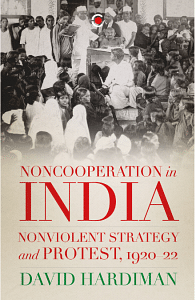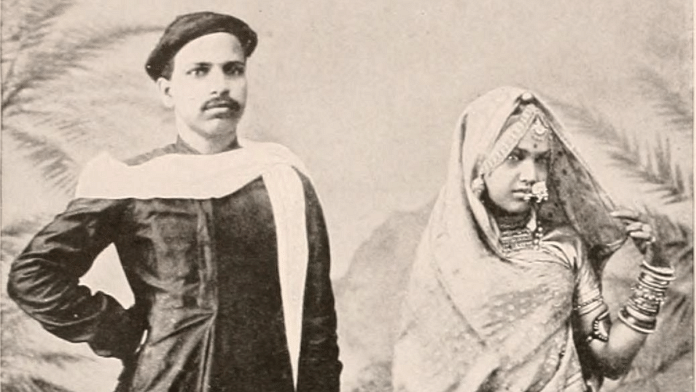The Bengali bhadralok elites had become accustomed to seeing themselves in the vanguard of the Indian nationalist movement, but they were now being outflanked by a charismatic Gujarati and a group of Muslim radicals. This irked them, and in late 1920, under the inspired leadership of Chittaranjan Das, they sought once more to gain the initiative.
Many in Bengal besides the Muslims were at that time spoiling for a fight with the British. During the First World War, some Indian businessmen in Bengal had made huge profits. To the fore in this respect were the Oswal, Agarwal and Maheshwari Baniya traders from the Marwar region of Rajasthan who had migrated to Calcutta from the mid-nineteenth century onwards, settling mainly in Barabazar. Known collectively as ‘Marwaris’, they had gradually replaced Bengalis as the chief collaborators with the British banking houses. They became the principle distributers of Manchester piece-goods in eastern India, and were prominent in the grain, oil-seed and jute trades – which were controlled ultimately by the big European managing agencies. They had not been involved in the Swadeshi Movement. The war had however given them greater financial power, and the grip of the European
managing agencies had been loosened. According to Rajat Ray: ‘From collaborators they turned almost overnight into competitors’. They gained control over the share market, and their speculative activities affected all areas of economic life in Bengal. Europeans accused them of gambling on the prices of essentials in an irresponsible manner and they began to compete openly with the European managing agencies, using their financial power to gain a dominant position in various manufacturing sectors. In 1919, they started building their own jute mills in 1919 and they now suffered from blatant racial discrimination by European businessmen. Their response was to support the nationalists, providing large sums for Congress funds. They were far more sympathetic towards Gandhi – a fellow Baniya from western India – than the Bengali bhadralok politicians. G.D. Birla, a leading Calcutta Marwari, became a particularly staunch Gandhian. The Marwari Chamber of Commerce supported the Noncooperation Movement and helped enforce the boycott of British goods.
The European businessmen of Calcutta strongly resented the Montagu-Chelmsford reforms, taking them as a sign that they were losing their hold over British officialdom in India. Before then, they had always felt that their interests would be safeguarded by those who ran the Raj. Once the reforms were a fait accompli, they saw that they would now need to engage in politics themselves and try to keep in favour with Indian politicians if they were to protect their large financial assets. In fact, many British civil servants in Bengal continued to believe that European businessmen needed protection under the new order. The officials also argued that the Congress stood for the interests of the high castes alone and that the low castes of Bengal would be exploited unless they continued to protect them. The battle was now for the hearts and minds of the mass of the Bengali people. It was not a contest that the British were likely to win.
During the Rowlatt Satyagraha, the Congress leaders in Bengal had been half-hearted in their support of the agitation. As yet, they had no proper organisation in the countryside. Only in Calcutta was there any real response. When news came of Gandhi’s arrest on 10 April, the Marwaris and north Indians closed their shops, and trams were stopped by crowds in which Marwari youth took the leading role. Bengali Hindus took almost no part in the protest at Gandhi’s arrest. Marwaris, Bhatias and Muslims were involved in rioting on 12-13 April. There was no disruption in the interior of Bengal. When information came through about the atrocities in Punjab – particularly about the massacre in Amritsar – there was an outburst of anger and revulsion, and Rabindranath Tagore took the lead in resigning his knighthood. Tagore stated in a letter to C.F. Andrews that the British had lost all moral prestige, and no longer could the people of India have any faith in British justice. Throughout July and August, there was steadily rising moral indignation over what had happened in Amritsar.
The promised constitutional reforms were badly tainted by this. At the Amritsar Congress in December 1919, Chittaranjan Das moved a resolution that declared the reforms ‘inadequate, unsatisfactory and disappointing’. Das was now being acknowledged as the foremost nationalist leader in Bengal.
Chittaranjan Das was born in Calcutta in 1870 and was thus a year younger than Gandhi. He was from a wealthy family with a progressive reputation that came originally from Bikrampur in East Bengal. He was sent to Britain for education, where he failed the Indian Civil Service exam, but qualified as a barrister. He returned in 1892 to set up practice in Calcutta, soon becoming an extremely successful lawyer. He was involved in nationalist activity from his student days onwards and was part of the Swadeshi Movement, being close to Bipin Chandra Pal and Aurobindo Ghose and worked on the production of the weekly Bande Mataram. In 1910 he became a hero in the city through his painstaking defence of Aurobindo Ghose and his fellowaccused on terrorist charges. Das was a politician of great skill and was widely admired by his fellow bhadralok.
 This excerpt from from David Hardiman’s ‘Noncooperation in India’ has been published with permission from Westland Books.
This excerpt from from David Hardiman’s ‘Noncooperation in India’ has been published with permission from Westland Books.



